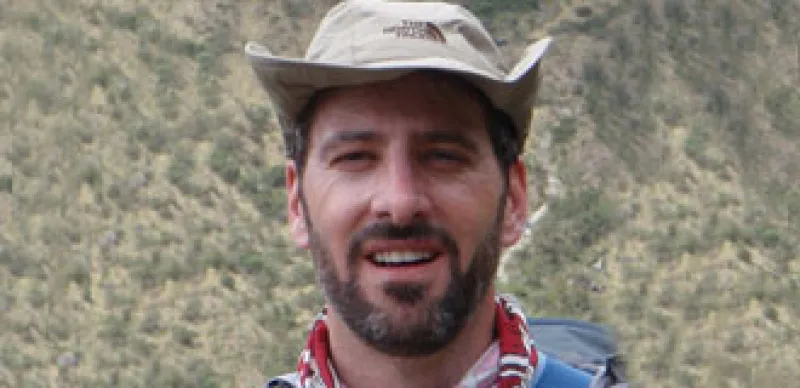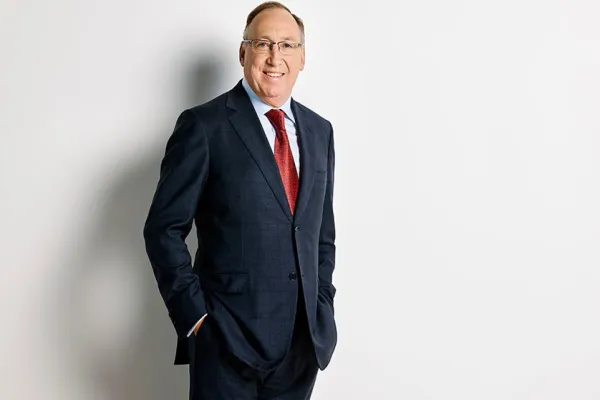Carhart, the former co-head of Goldman Sachs Asset Management’s quantitative investing group, arrives (almost) exactly on time. Dressed casually but smartly in a checked dress shirt and slacks, his salt and pepper hair is a quite a bit longer than it was when he worked on Wall Street, but he still has his trademark beard and metal-rimmed glasses. He could just as likely be a Hunter Collage professor as one of the most highly paid asset management professionals to have worked at Goldman.
Carhart opts for a Triestino Doppio, a Sicaffe specialty which appears to be espresso with very thick steamed cream. He has plenty of time for coffee these days. He and Raymond Iwanowski, his fellow co-head of Goldman’s Global Alpha hedge fund, left the firm. Since then, Carhart been spending time with his wife, Sabrina, and their two young daughters. The family keeps an Airstream trailer in Idaho, his wife’s home state, and this summer they took an extended road trip up the coast and then back to Idaho — 4,600 miles in nine weeks.
Carhart grew up in Washington State. After years as a child spent toiling on the famiy’s apple farms, he decided he wanted a desk job when he grew up. Having started his Wall Street career at a small money management firm, he joined Goldman as a portfolio manager of quantitative research in 1997. (At that time he was an assistant professor at the Marshall School of Business at USC, also a Senior Fellow of The Wharton Financial Institutions Center, a consultant to money manager Dimensional Fund Advisors and a member of the investment board of Mercer Global Advisors).
Global Alpha had many good years. In 2005 it returned almost 40 percent. Assets piled in, with the fund hitting $11.5 billion by mid-2007. But in early August 2007, there was a dramatic market decline followed by a sharp rebound on August 13, resulting in huge losses for almost all of the top quantitative managers, and Goldman’s Global Alpha was no exception. It lost almost 40 percent that year.
The universal losses laid bare the fact that the quants were using similar strategies to power their funds. “Suddenly you have an X-ray into the entire industry and you see everyone is holding the same basic positions,” he says. “That is one of the big issues in using other academics as the spark — you can’t use outside academic research as the flint stone for your ideas.”
Carhart and Iwanowski retooled the business, making sure its entire quantitative process was its own research. This is where Carhart believes the team had its edge anyway. Anyone can look at data, he says, the key is what you do with it. “It starts with intuition, and then you have to have innovation.” Returns improved. Global Alpha ended 2008, a tough year for hedge funds, up 2 percent. But the unit Carhart had helped build had irreparably changed. It came as little surprise when both he and Iwanowski announced their “retirement.”
But at 43 Carhart is a long way from living out his sunset years golfing or, in his case, cycling. Though he’s tight-lipped about his specific plans, Carhart has said he’s gearing up to launch his own firm sometime in 2010 after his one-year, non-compete agreement with Goldman expires.
Carhart likes the intellectual give and take of academia, and I get the impression that this is what he and Iwanowski tired to recreate at Goldman. But the challenges — and obligations — of working within such a large organization with both client and management responsibilities pulled them away from that mission. It seems clear what he wants to build at a smaller firm is something closer to the collegial ideal he tried to achieve at Goldman.
He’s also had time to ponder some of the bigger issues facing the asset management business, such as fee structure. Carhart says investors should better understand where their managers returns are coming from — alpha or beta. They should not be paying 2 and 20 for beta, as too many investors were doing during the bull market, he says. Instead investors should use quantitative analytics to identify true alpha. Too often, Carhart says, managers are not upfront about this and investors are too quick to believe all upside is alpha. “Investors are too easily snookered into performance.”
The ideal asset management firm should only charge high fees for true alpha, not beta, Carhart says. Ray Dalio, founder of Bridgewater Associates in Westport, Connecticut, has been beating a similar drum for over 20 years. Given that Bridgewater is now the largest hedge fund in the world with over $37 billion in assets under management, Dalio certainly has his converts. But other investors still question whether an even more quantitative approach is really the answer to the problems in the money management business. Carhart, like Dalio, may see that the future of asset management leads this way, but it remains to be seen how much of the investment community is willing to follow.
The Alpha / Beta blog is devoted to news and insights about the alternative investment (Alpha) and the traditional asset management (Beta) industries. Institutional Investor staff writer Imogen Rose-Smith covers hedge funds, private equity and their investors. Julie Segal is an Institutional Investor staff writer covering money managers and pension funds, foundations and endowments.






